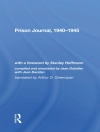In its earliest description, children with autism were described as behaving as though other people were not present, and interacting with parts of them, such as hands, as though they were objects (Kanner, 1943). The children appeared to be in their own world and parents reported difficulties in gaining their attention. Whilst the children with autism demonstrated a diminished interest in people, Kanner also noted how objects appeared to be of much greater interest to the children, as they rushed to certain objects in a room and ignored the people present. In current diagnostic terms, ASD is a pervasive developmental disorder that is characterised by difficulties in social communication and interaction, and restricted and/or repetitive behaviours and interests (American Psychiatric Association, 2013; World Health Organization, 1992). The social difficulties include deficits in social-emotional reciprocity, in non-verbal communication, and in developing, maintaining and understanding social relationships. The repetitive and restricted behaviours and interests may manifest as stereotyped or repetitive movements, use of objects or speech; insistence on sameness, inflexible adherence to routines, or ritualised patterns of behaviour; highly restricted, fixated interests that are abnormal in intensity or focus; hyper or hyposensitivity to sensory input or unusual interests in sensory aspects of the environment (American Psychiatric Association, 2013). Diagnostic measures for ASD look for deficits in reciprocal play, turn taking, language and communication whilst observing the child (Autism Diagnostic Observation Schedule, ADOS; Lord et al., 1989). An adult module of the ADOS was also developed to enable diagnosis later in life (Lord et al., 2000). Alternatively (or additionally), an interview with the primary care giver gives a lifespan perspective on behaviours around social interaction (e.g. emotional sharing and offering, and seeking comfort), communication and language differences (e.g. conversational interchange and idiosyncratic language use) and repetitive, restricted and stereotyped behaviours (e.g. rituals and unusual sensory interests) (Autism Diagnostic Interview, ADI; Le Couteur et al., 1989).
Joanne Black
Visual attention to social and non-social objects across the autism spectrum [EPUB ebook]
Visual attention to social and non-social objects across the autism spectrum [EPUB ebook]
Acquista questo ebook e ricevine 1 in più GRATIS!
Lingua Inglese ● Formato EPUB ● Pagine 238 ● ISBN 9781805241300 ● Dimensione 0.5 MB ● Casa editrice brandontiminsky ● Pubblicato 2023 ● Edizione 1 ● Scaricabile 24 mesi ● Moneta EUR ● ID 8827175 ● Protezione dalla copia Adobe DRM
Richiede un lettore di ebook compatibile con DRM












